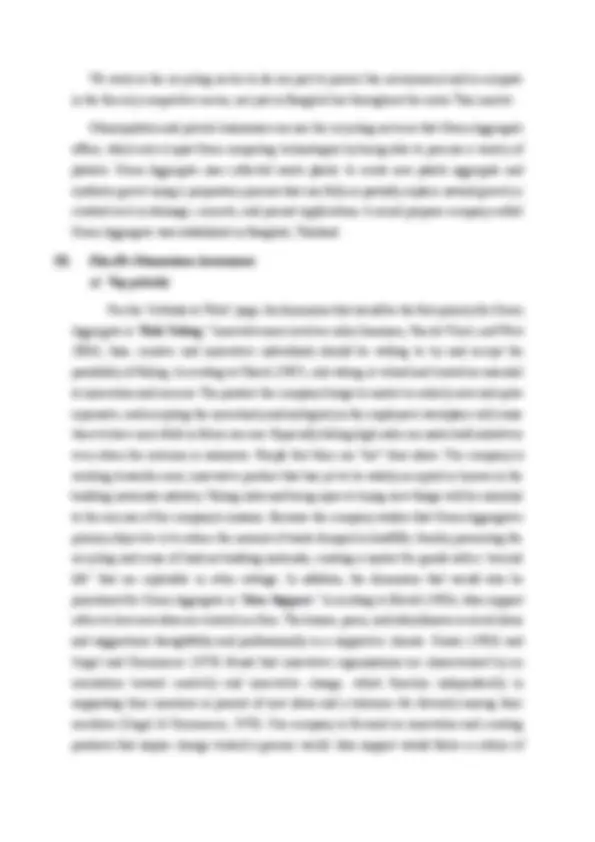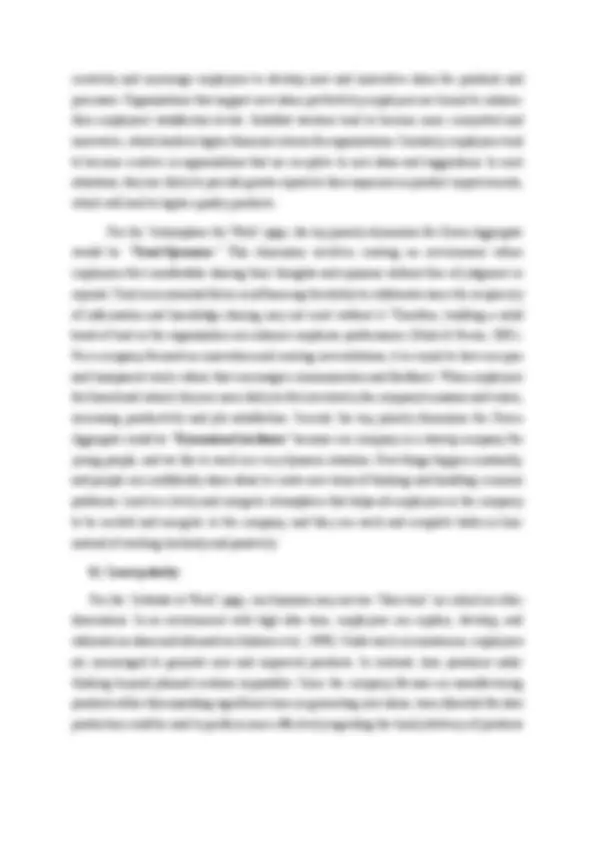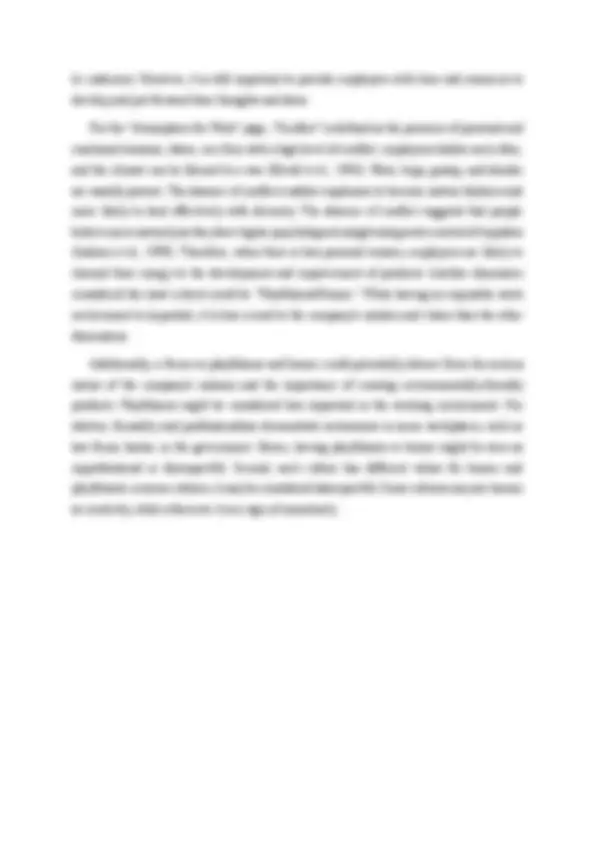





Study with the several resources on Docsity

Earn points by helping other students or get them with a premium plan


Prepare for your exams
Study with the several resources on Docsity

Earn points to download
Earn points by helping other students or get them with a premium plan
Community
Ask the community for help and clear up your study doubts
Discover the best universities in your country according to Docsity users
Free resources
Download our free guides on studying techniques, anxiety management strategies, and thesis advice from Docsity tutors
Topic: Ekvall's ten dimensions of creative climate
Typology: Assignments
1 / 7

This page cannot be seen from the preview
Don't miss anything!




I. Organizational Innovativeness According to Dhargalkar, Shinde, & Arora (2016), innovativeness is the capacity to introduce new processes, products, or ideas in an organization. Dibrell et al. (2014) also defined innovativeness as a firm‘s willingness to strongly emphasize technological developments, new products, new services, and improved product lines or processes. An organization‘s long-term success depends on its ability to adopt sustainable innovativeness (Wang & Friske, 2016). Most researchers keep stressing the importance of innovativeness because the very survival of any organization will depend on its level of innovativeness. It equally helps management devices find quicker and easier solutions to business problems. During this process, new ideas that are more effective than the old ones are discovered and contribute more to business performance. Rapid innovation enables new processes - such as laser metal deposition and cutting, ultrasonic soldering, and thermal-diffusion galvanizing - that must be developed, adopted, and scaled. These new manufacturing capabilities, which improve precision, geometric complexity, and compatibility with advanced materials, will increase the need for small, highly skilled workforces and integrated networks of smaller, specialized, and flexible plants. Of course, not all innovation is created equal or can add the same value. Nevertheless, players that adopt the right combination stand to gain an outsized share of the market (McKinsey&Company, 2021). II. Business Description
creativity and encourage employees to develop new and innovative ideas for products and processes. Organizations that support new ideas put forth by employees are bound to enhance their employees' satisfaction levels. Satisfied workers tend to become more committed and innovative, which leads to higher financial returns for organizations. Similarly, employees tend to become creative in organizations that are receptive to new ideas and suggestions. In such situations, they are likely to provide greater inputs to their superiors on product improvements, which will lead to higher-quality products. For the "Atmosphere for Work" page, the top priority dimension for Green Aggregate would be " Trust/Openness ." This dimension involves creating an environment where employees feel comfortable sharing their thoughts and opinions without fear of judgment or reprisal. Trust is an essential factor in influencing the ability to collaborate since the reciprocity of information and knowledge sharing may not exist without it. Therefore, building a solid bond of trust in the organization can enhance employee performance (Dirks & Ferrin, 2001). For a company focused on innovation and creating new solutions, it is crucial to have an open and transparent work culture that encourages communication and feedback. When employees feel heard and valued, they are more likely to feel invested in the company's mission and vision, increasing productivity and job satisfaction. Second, the top priority dimension for Green Aggregate could be " Dynamism/Liveliness " because our company is a startup company for young people, and we like to work in a very dynamic situation. New things happen constantly, and people can confidently share ideas to create new ways of thinking and handling common problems. Lead to a lively and energetic atmosphere that helps all employees in the company to be excited and energetic in the company, and they can work and complete tasks on time instead of working tirelessly and passively. b) Least priority For the "Attitude to Work" page, our business may not see "Idea time" as critical as other dimensions. In an environment with high idea time, employees can explore, develop, and elaborate on ideas and alternatives (Isaksen et al., 1998). Under such circumstances, employees are encouraged to generate new and improved products. In contrast, time pressures make thinking beyond planned routines impossible. Since the company focuses on manufacturing products rather than spending significant time on generating new ideas, time allocated for idea production could be used to perform more effectively regarding the timely delivery of products
to customers. However, it is still important to provide employees with time and resources to develop and put forward their thoughts and ideas. For the "Atmosphere for Work" page, "Conflict" is defined as the presence of personal and emotional tensions, where, in a firm with a high level of conflict, employees dislike each other, and the climate can be likened to a war (Ekvall et al., 1983). Plots, traps, gossip, and slander are usually present. The absence of conflict enables employees to become mature thinkers and more likely to deal effectively with diversity. The absence of conflict suggests that people behave more maturely as they have higher psychological insight and greater control of impulses (Isaksen et al., 1998). Therefore, when there is less personal tension, employees are likely to channel their energy to the development and improvement of products. Another dimension considered the least critical could be "Playfulness/Humor." While having an enjoyable work environment is important, it is less crucial to the company's mission and vision than the other dimensions. Additionally, a focus on playfulness and humor could potentially detract from the serious nature of the company's mission and the importance of creating environmentally-friendly products. Playfulness might be considered less important in the working environment. For starters, formality and professionalism demonstrate seriousness in some workplaces, such as law firms, banks, or the government. Hence, having playfulness or humor might be seen as unprofessional or disrespectful. Second, each culture has different values for humor and playfulness; in some cultures, it may be considered disrespectful. Some cultures may see humor as creativity, while others see it as a sign of immaturity.